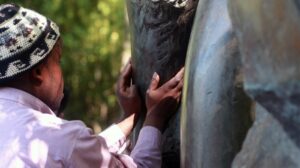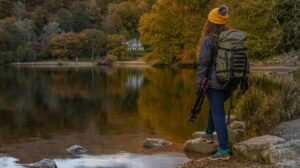
Jungle trekking vacations offer a thrilling escape into the heart of nature, attracting adventure seekers from around the globe. These unique experiences allow travelers to explore lush landscapes, vibrant wildlife, and the rich culture of diverse regions. With numerous breathtaking destinations, from the Amazon rainforest to the jungles of Southeast Asia, enthusiasts can indulge in a variety of treks that cater to different skill levels and preferences, all while immersing themselves in the beauty of the great outdoors.
Planning a jungle trek involves careful consideration of essential gear, travel companions, and safety precautions, ensuring an unforgettable journey filled with discovery and excitement. Whether you’re trekking solo, with friends, or with family, there’s a suitable adventure waiting for everyone.
Jungle Trekking Vacations Overview
Jungle trekking vacations offer adventure seekers the ultimate escape into the wild, combining nature exploration with physical challenges. These immersive experiences allow travelers to connect with nature, witness diverse ecosystems, and engage with local cultures. The thrill of trekking through dense forests, spotting wildlife, and discovering hidden waterfalls creates unforgettable memories.Popular destinations for jungle trekking include the Amazon Rainforest in South America, Borneo’s jungles in Southeast Asia, and the cloud forests of Costa Rica.
Each location boasts its own unique features: the Amazon is renowned for its biodiversity, Borneo offers the chance to see orangutans in their natural habitat, and Costa Rica is famous for its stunning landscapes and rich wildlife. The best seasons for jungle trekking can vary significantly; for instance, the dry season in Costa Rica runs from December to April, while the Amazon is best explored during the drier months of June to November.
Essential Packing for Jungle Trekking

Packing correctly is crucial for a successful jungle trekking adventure. A well-planned checklist helps ensure you have everything you need to stay comfortable and safe. Essential items include:
- Sturdy hiking boots for rugged terrain
- Breathable and moisture-wicking clothing
- A lightweight rain jacket for unexpected weather
- Insect repellent to ward off mosquitoes
- A first aid kit for minor injuries
- High-energy snacks for quick refueling
- A durable water bottle or hydration system
A travel backpack is also essential, especially for women who may require options that cater to their specific needs. Look for backpacks with adjustable straps, ergonomic designs, and sufficient capacity to hold all your gear without being overly bulky. Brands like Osprey and Deuter offer excellent choices tailored for female trekkers.When it comes to hydration during treks, consider carrying travel bottles that are insulated or made from durable materials.
Options like collapsible water bottles are lightweight, while stainless steel bottles can keep water cool in hot climates.
Travel Companions for Jungle Trekking
Having a travel buddy can enhance the jungle trekking experience significantly. Not only does it improve safety, but sharing the adventure makes for cherished memories. Choose a companion who shares similar interests in trekking, nature, and adventure.Travel books are invaluable resources for planning your jungle trekking adventures. Options such as “Lonely Planet” guides provide insights into best routes, local customs, and safety tips.
Additionally, consider bringing along a travel car seat or booster seat if you’re traveling with family. These seats ensure the safety of young children during transfers to remote areas.
Jungle Trekking with Children
Traveling with children in the jungle requires careful planning to ensure safety and enjoyment. Setting realistic hiking distances and incorporating rest stops is vital. Kids are more likely to enjoy the experience when the trek feels manageable. For infants, having a travel bassinet or crib is essential during jungle vacations. It provides a safe and comfortable sleeping area, allowing parents to relax after a day of exploration.
Look for child-friendly jungle trekking locations, such as those in Thailand or Costa Rica, where activities like zip-lining and wildlife spotting cater to younger audiences.
Travel Preparations and Documentation

Preparing for jungle treks goes beyond packing; it requires careful organization of travel documents. Create a travel checklist specifically for jungle trekking that includes health and safety precautions, such as vaccinations and medications. Organizing travel documents like passports, visas, and insurance before embarking on your journey is crucial. This helps avoid last-minute stress and ensures all paperwork is in order.
Additionally, consider using travel credit cards that offer benefits tailored for adventure travelers, such as travel insurance coverage or rewards for outdoor gear purchases.
Travel Modes and Logistics
Traveling by train to reach jungle trekking destinations can be an enjoyable and scenic experience. Many countries offer train journeys that provide breathtaking views of landscapes leading into jungle regions. Several travel companies specialize in organizing jungle trekking vacations, offering guided tours that can enhance your experience with local knowledge and resources. Understanding the logistics of reaching remote jungle areas is equally important.
Look for accommodations that suit your needs, ranging from eco-lodges to camping options that allow you to immerse yourself in nature.
Travel Inspiration and Bucket Lists
Creating a travel bucket list focused on jungle trekking experiences can inspire future adventures. Consider iconic treks like the Inca Trail to Machu Picchu or the rainforest trails of Madagascar. When planning your itinerary, factor in travel duration, desired activities, and rest days to avoid burnout. Be sure to check travel channel schedules that feature jungle trekking adventures and documentaries for additional inspiration and tips from experienced trekkers.
Clothing and Gear for Jungle Trekking
Selecting the right clothing for jungle trekking is vital for comfort and protection. Lightweight, quick-drying fabrics are ideal, allowing for ease of movement and moisture management. Look for travel clothing options that offer UV protection to shield you from the sun.When comparing travel gear for jungle trekking, focus on shoes that provide good grip and support, as well as outerwear that can handle varying weather conditions.
Lightweight, breathable travel clothes ensure comfort during strenuous activities and humid conditions.
Safety and Environmental Considerations
Safety is paramount during jungle trekking. Familiarize yourself with potential wildlife encounters and navigation techniques. Carry a map or GPS device, and ensure someone knows your trekking route.Adopt eco-friendly practices while on jungle trekking vacations, such as minimizing waste and respecting wildlife habitats. Additionally, prepare for health risks associated with jungle environments, including vaccinations and awareness of local wildlife that may pose threats.
By following these guidelines, you can enjoy a thrilling and responsible jungle trekking experience.
Conclusion
In summary, jungle trekking vacations provide an exhilarating option for those looking to connect with nature and push their limits. With the right preparation, travelers can create lasting memories while navigating stunning landscapes and encountering unique wildlife. So whether you’re plotting your next adventure or adding to your bucket list, consider a jungle trek for an experience that promises both adventure and awe.
Commonly Asked Questions
What are the best destinations for jungle trekking?
Popular destinations include the Amazon rainforest, Costa Rica, Borneo, and the jungles of Madagascar, each offering unique ecosystems and experiences.
What should I pack for a jungle trek?
Essential items include lightweight clothing, sturdy hiking shoes, a reliable backpack, hydration bottles, insect repellent, and a first-aid kit.
Is it safe to trek in the jungle?
While jungle trekking can be safe, it’s vital to follow safety precautions such as staying with a guide, being aware of wildlife, and carrying necessary supplies.
Can children go on jungle treks?
Yes, many family-friendly treks are available, but it’s crucial to choose age-appropriate trails and ensure children are adequately prepared.
What are eco-friendly practices to adopt while trekking?
Practices include staying on marked paths, minimizing waste, using biodegradable products, and respecting wildlife and local cultures.





